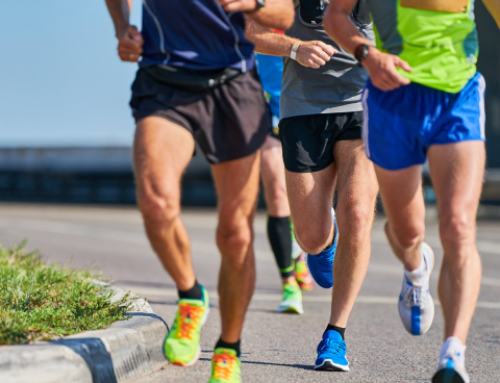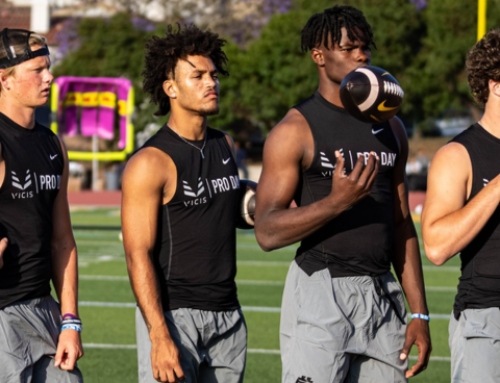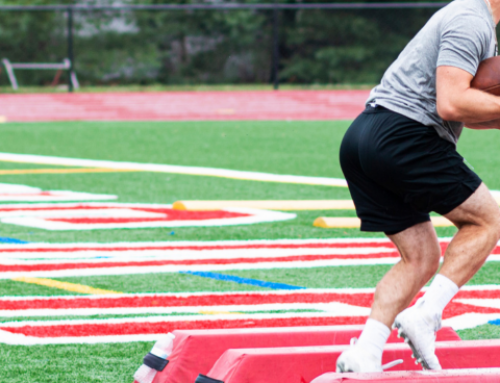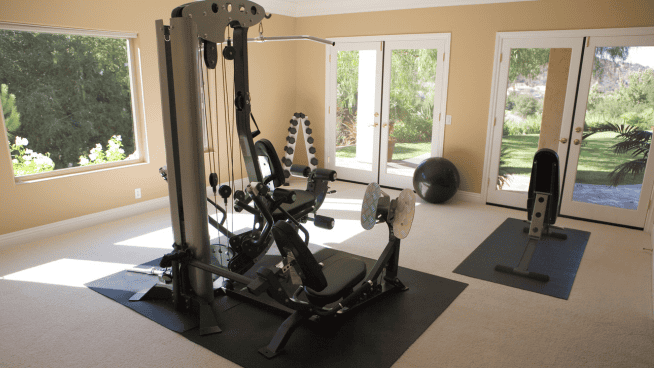Increase Football Speed, Part 1: Why Jumping Rope Is the Perfect Speed Workout
Speed, agility and quickness. Every football athlete, regardless of position, needs these attributes. They are the difference makers between juking a tackle, making a tackle or scoring a winning touchdown. Speed, agility and quickness are also the main emphases in jumping rope, which is why it’s such a great workout for increasing football speed. Incorporating a few minutes of jumping rope into your speed training this off-season can pay huge dividends when next season rolls around.
Still convinced that jumping rope is just for your kid sister on the playground? Here are five reasons you need to reconsider:
Stamina and Speed Endurance
What good are you if you fade out after only one or two sprints? Football players who get recruited are the ones who maintain their speed, play after play, into the final minutes. (See Conditioning for the Big Man on the Field.) A little goes a long way with jumping rope; just a few minutes on a consistent basis will improve stamina in your forearms, shoulders and leg muscles, especially your calves. The right interval training will build your speed-endurance at top speeds.
Posture and Form
Skipping rope naturally improves the ability to maintain a long spine, ultimately improving posture, which is extremely important for running at top speeds. (See Get Faster: Sprinting Technique.) Without it, you’ll never be as fast as you could be. Jumping rope activates your “horsepower” muscles, the glutes. They’re a big factor in running fast. Skipping also reinforces ankle, knee and core stability. When you skip, you perform the triple extension action used in sprinting. These are all keys that make the difference between running fast and running very fast. Next practice, incorporate jumping rope with your sprinting form drills and to correct asymmetries (left-right differences). Correcting asymmetries increases running efficiency, which reduces the risk of injury.
Agility and Balance
The movement of skipping forces you to land on your toes, combining untapped power in your calves with the power of your quads, hamstrings, glutes and core. It teaches you to stay on your toes and be ready for action; and it increases your ability to pivot on a good strong foot with most weight on the toe. You improve your agility and quickness, and you reduce the stress on your knees from twisting and cutting actions in football.
Quickness by Being Relaxed
Quickness comes from staying relaxed in your extremities while keeping your spine erect and your abdominals drawn in. Skipping reinforces this pattern in your body. The more your trunk is held in the appropriate position and the more the your extremities are relaxed, the quicker and more powerful your movements will be. In a nutshell, skipping teaches you to be fast while being relaxed.
Foot Speed
With rope work, movements are small and crisp, because jumps are short and quick. The better you get at rope work, the faster the movements and the faster your foot speed. What football player doesn’t need foot speed?
Check out this jump rope speed workout and watch for Part 2 of this series, where you’ll find jump rope speed drills to incorporate into your program.
RECOMMENDED FOR YOU
MOST POPULAR
Increase Football Speed, Part 1: Why Jumping Rope Is the Perfect Speed Workout
Speed, agility and quickness. Every football athlete, regardless of position, needs these attributes. They are the difference makers between juking a tackle, making a tackle or scoring a winning touchdown. Speed, agility and quickness are also the main emphases in jumping rope, which is why it’s such a great workout for increasing football speed. Incorporating a few minutes of jumping rope into your speed training this off-season can pay huge dividends when next season rolls around.
Still convinced that jumping rope is just for your kid sister on the playground? Here are five reasons you need to reconsider:
Stamina and Speed Endurance
What good are you if you fade out after only one or two sprints? Football players who get recruited are the ones who maintain their speed, play after play, into the final minutes. (See Conditioning for the Big Man on the Field.) A little goes a long way with jumping rope; just a few minutes on a consistent basis will improve stamina in your forearms, shoulders and leg muscles, especially your calves. The right interval training will build your speed-endurance at top speeds.
Posture and Form
Skipping rope naturally improves the ability to maintain a long spine, ultimately improving posture, which is extremely important for running at top speeds. (See Get Faster: Sprinting Technique.) Without it, you’ll never be as fast as you could be. Jumping rope activates your “horsepower” muscles, the glutes. They’re a big factor in running fast. Skipping also reinforces ankle, knee and core stability. When you skip, you perform the triple extension action used in sprinting. These are all keys that make the difference between running fast and running very fast. Next practice, incorporate jumping rope with your sprinting form drills and to correct asymmetries (left-right differences). Correcting asymmetries increases running efficiency, which reduces the risk of injury.
Agility and Balance
The movement of skipping forces you to land on your toes, combining untapped power in your calves with the power of your quads, hamstrings, glutes and core. It teaches you to stay on your toes and be ready for action; and it increases your ability to pivot on a good strong foot with most weight on the toe. You improve your agility and quickness, and you reduce the stress on your knees from twisting and cutting actions in football.
Quickness by Being Relaxed
Quickness comes from staying relaxed in your extremities while keeping your spine erect and your abdominals drawn in. Skipping reinforces this pattern in your body. The more your trunk is held in the appropriate position and the more the your extremities are relaxed, the quicker and more powerful your movements will be. In a nutshell, skipping teaches you to be fast while being relaxed.
Foot Speed
With rope work, movements are small and crisp, because jumps are short and quick. The better you get at rope work, the faster the movements and the faster your foot speed. What football player doesn’t need foot speed?
Check out this jump rope speed workout and watch for Part 2 of this series, where you’ll find jump rope speed drills to incorporate into your program.











